In March 1999, builders working on the redevelopment of Spitalfields Market made a remarkable discovery – a beautifully carved stone sarcophagus, unopened, and obviously holding the remains of someone of exceptional wealth and status. When examined at the Museum of London, the lead coffin inside was found to contain the body of a young woman. Further analysis revealed that her head had rested on a pillow of bay leaves, that she had been embalmed with oils from the Arab world and the Mediterranean, and that she was wrapped in silk, interwoven with fine gold thread. Isotopic analysis of her teeth revealed, not only that she came from Italy, but from Imperial Rome itself. What we do not know is who she was, and why she was so far from home when she died in about AD 350.
Here is a facial reconstruction by Caroline Wilkinson on view at the Museum of London …
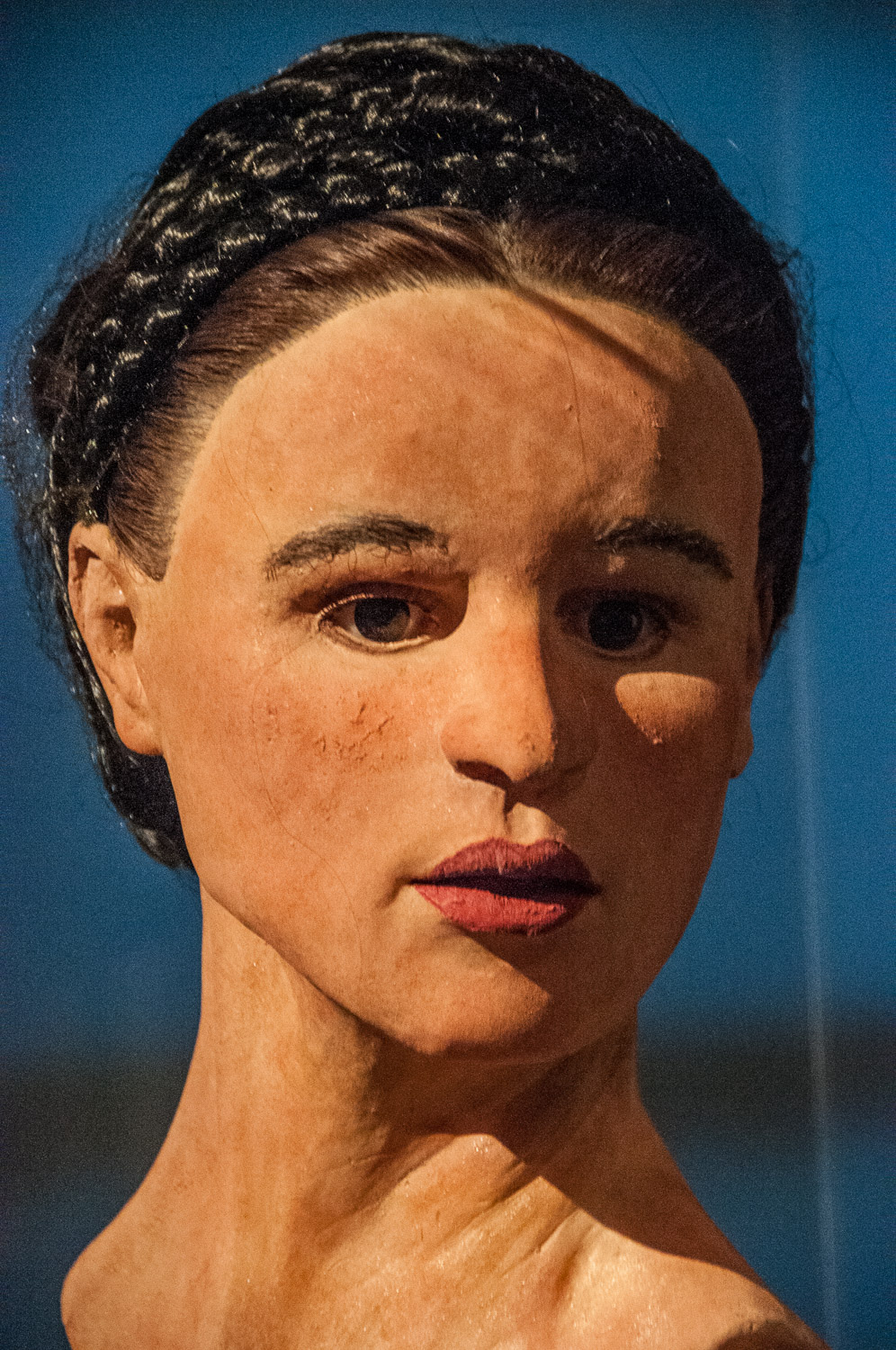
The Museum Curator, Rebecca Redfern, describes her as ‘five foot three and delicately built, petite like a ballet dancer’
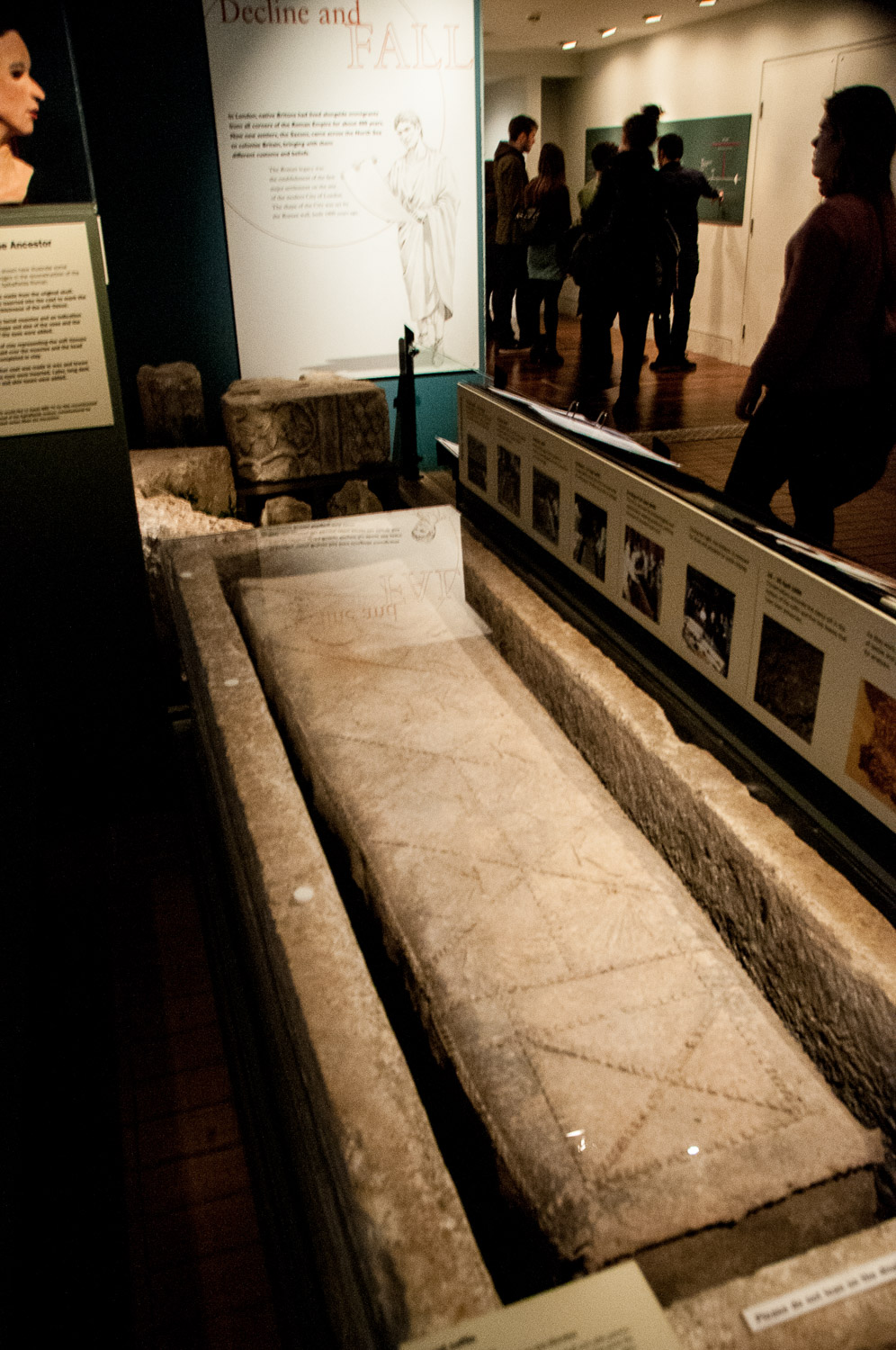
The sarcophagus is also on display along with the grave goods found with her
By the time this lady died, Rome’s connection with London stretched back centuries. Although Julius Caesar had landed troops twice, in 55 and 54 BC, a more thorough invasion took place under the personal leadership of the Emperor Claudius himself in AD 43. At some time in the late AD 40s, two small hills on the north side of the Thames (now the site of St Paul’s Cathedral and Leadenhall Market) were selected as the site of a new town – a settlement called Londinium. It was a strategic site being the lowest bridgeable point on the Thames and having easy access to the sea. Fresh water also flowed in from the rivers Fleet and Walbrook and the settlement began to flourish.
Relationships with the indigenous tribes were volatile, however, and a savage rebellion broke out in AD 61 when Roman soldiers forced their way into the palace of Boudicca, Queen of the Iceni. For resisting the confiscation of Iceni property, she was flogged and her two daughters raped. Supported by the neighbouring Trinovantes Tribe, Boudicca and her followers headed for the Roman town of Camulodunum (Colchester today) where they massacred all the inhabitants and set the place ablaze, routing the 9th Legion which had been sent too late to defend it. They then headed for Londinium which, considering it impossible to defend, had been abandoned to its fate by the Governor Paulinus. It too was burned to the ground and its population slaughtered.
Relentlessly pursued by Roman legions, Boudicca eventually killed herself by taking poison and an untrue legend grew up that she was buried under Platform 8 at King’s Cross station.
Maybe that’s why there is a Boadicea Street just north of the newly revitalised King’s Cross district. In fact, in 1830, when the name of the district was being reviewed, one of the discarded suggestions was ‘Boadicea’s Cross’. I don’t know if they spotted the double meaning.
I always thought that her raid had triggered the creation of the Roman London wall that one can see parts of today, but I was mistaken, and no one is entirely sure what prompted its construction much later, around AD 200. The wall enclosed some 330 acres and remained pretty much unchanged for 1700 years. It defined the outline of the City and gave names to places that we still use today.
I have been visiting some of the walls remaining sections …
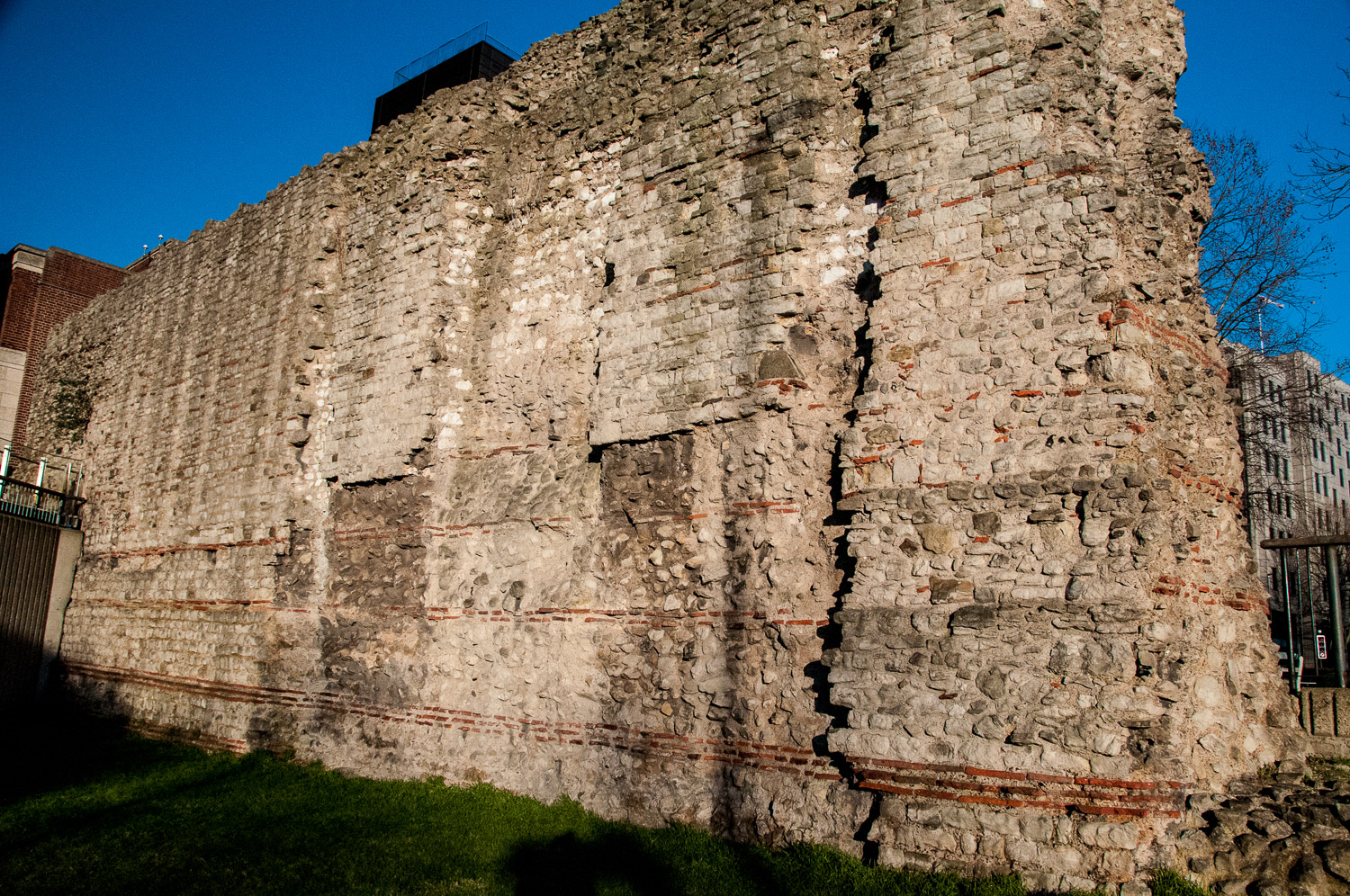
In the gardens next to Tower Hill Underground station
I have chosen the above picture as the first illustration because it demonstrates how the original Roman wall was added to in medieval times in order to strengthen the City defences. The Roman section is at the bottom, about four metres high, and characterised by the lines of red bricks. It would originally have been about ten metres high and have had a deep ditch as an additional defence on the eastern side. It was three metres thick and built of Kentish ragstone.
There is a particularly nice section of wall in Coopers Row, tucked away behind the Grange City Hotel …
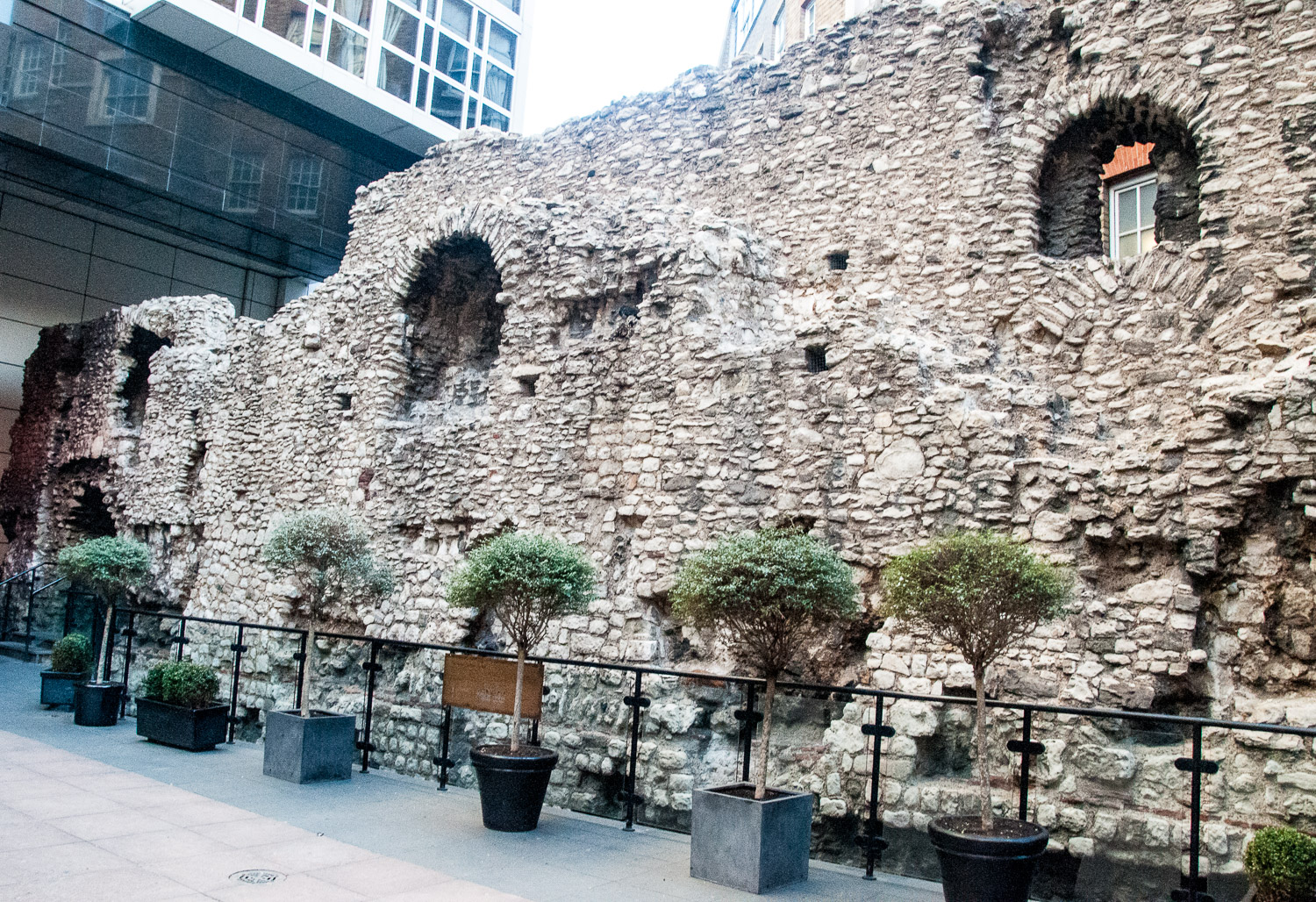
You can clearly see the medieval archers’ loopholes
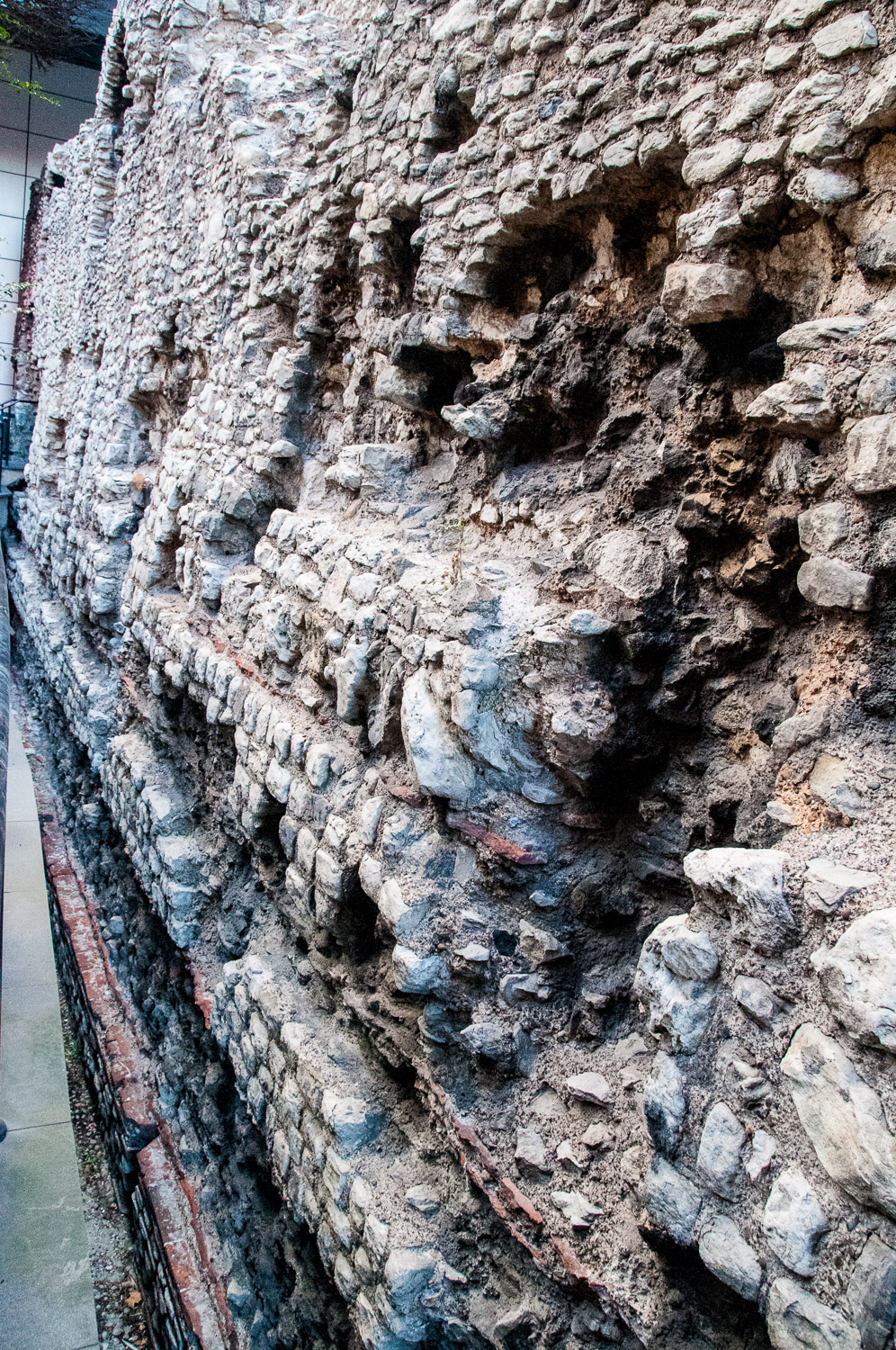
Looking down, the Roman line of red bricks is again visible
A visit to the Museum of London is a must for anyone interested in the City’s history, and there are sites to look at and visit nearby. For example, turn left after you leave the museum and walk along the Highwalk. Look to your left and you will see what is left of buildings that once incorporated part of the Roman wall. Known as Bastion 14, this has been extensively studied by MOLA (Museum of London Archaeology) who tell us that the medieval masonry structure lies on top of Roman foundations, whilst bricks were added, some part of late-medieval repairs. However most of the brickwork relates to later buildings as the City Wall fell out of use and the bastion became increasingly hidden as a consequence of the development of the area around it. By the 19th century, the structure was entirely incorporated into the surrounding buildings. The four-storey building that used to encase this structure was destroyed in World War II bombing.
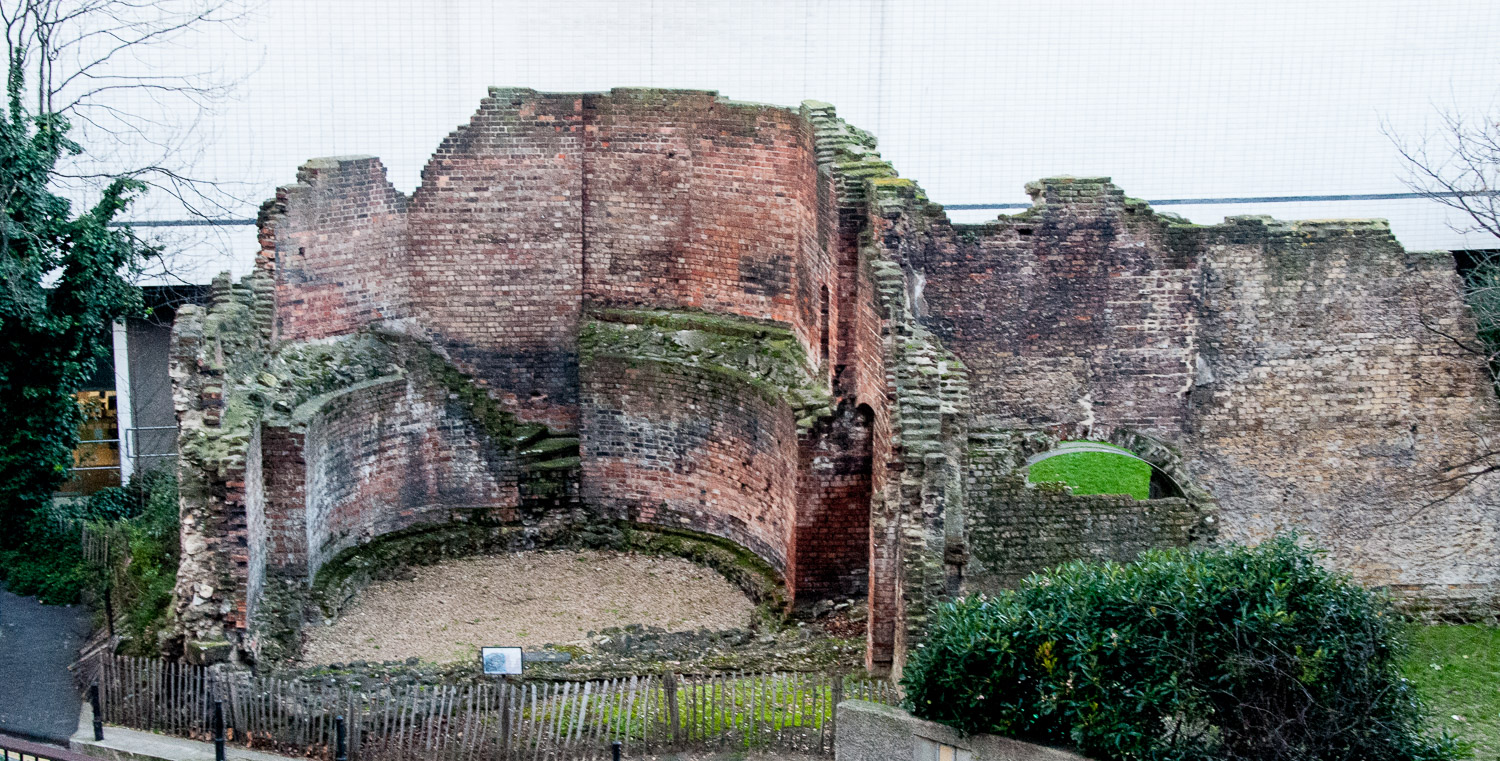
Bastion 14 viewed from Bastion Highwalk
Would you like a really close encounter with a segment of Roman pavement? I had often casually walked past these pretty blue doors on Foster Lane without venturing in, but in fact they lead to a fascinating little courtyard in which are displayed some intriguing objects …
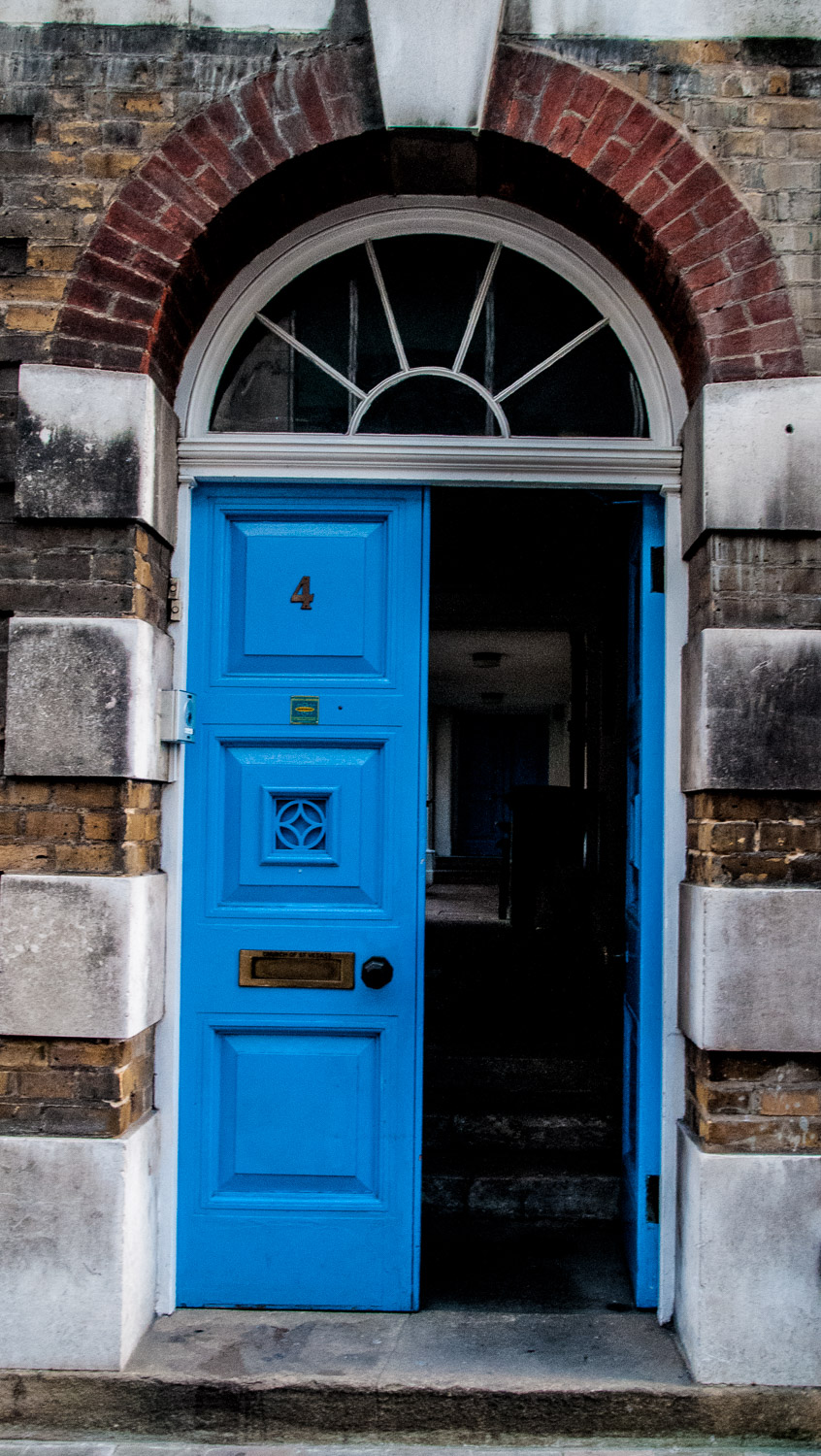
Entrance to St Vedast Fountain Courtyard and Cloister
And here you will find a piece of Roman pavement …
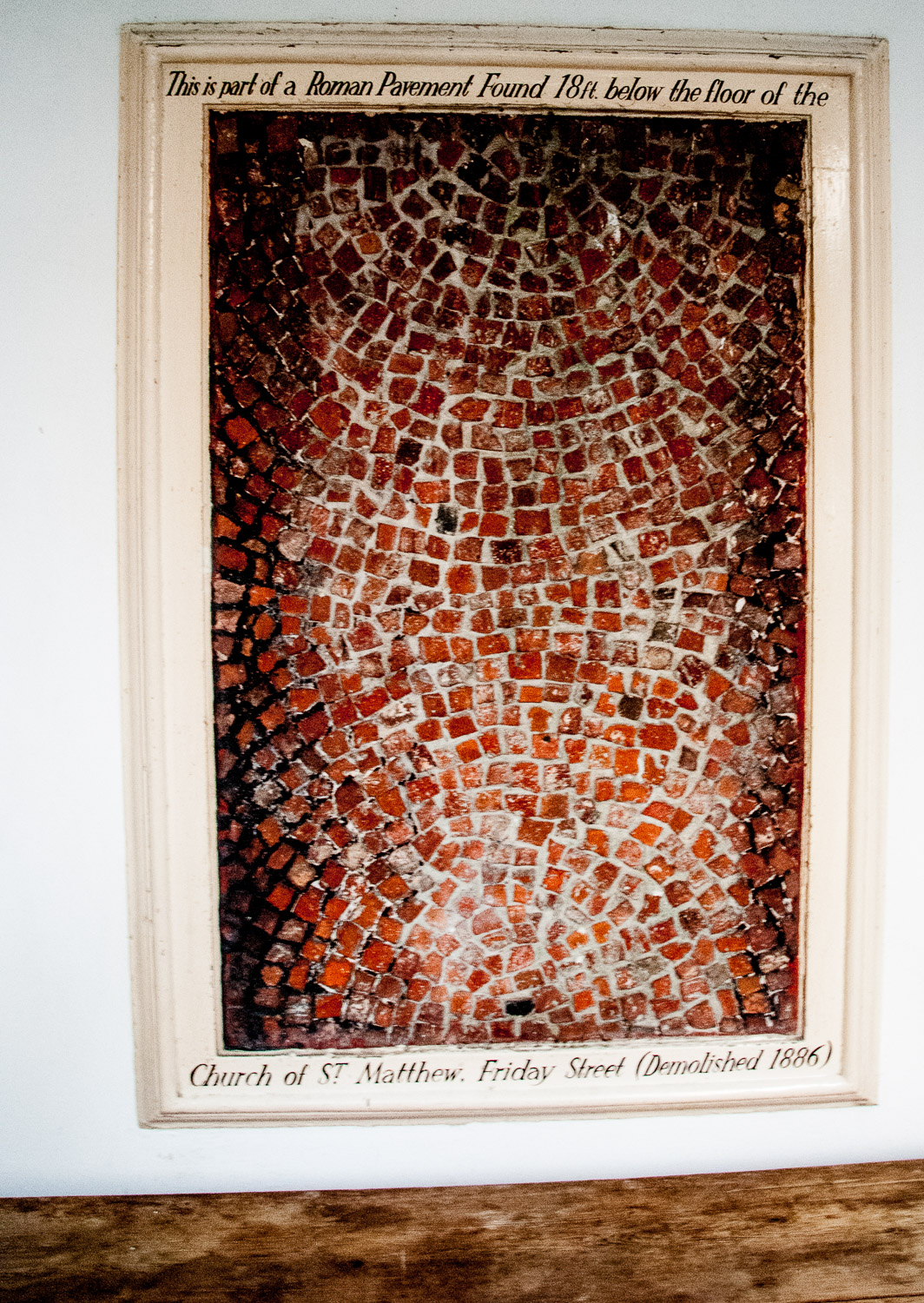
Due to the move of population from the City to the suburbs in the second half of the nineteenth century, St Matthew Friday became redundant and was demolished in 1886. The parish was joined to St Vedast-alias-Foster and the site sold for £22,005, the proceeds being used to build St. Thomas Finsbury Park. One hopes St Matthew was satisfied with this transaction – he is, after all, the patron saint of accountants.
In 1995, four years before the wealthy Roman lady was found, another skeleton was discovered when excavations were taking place before the construction of 30 St Mary Axe, now often referred to as the Gherkin. The remains were of a young girl aged between 13 and 17 years – her arms were crossed over her body and pottery close by indicated a burial date of between AD 350 and 400.
Having been removed to the Museum of London, she waited patiently until 2007 when the developers of the Gherkin proposed that she be reburied on the site. So, in April of that year, there was a service at St Botolph’s church in Aldgate followed by a procession through the streets before her body was respectfully interred near where it was found. The Lady Mayoress of the City of London was there to spread rose petals on the gravesite, marked with a marble slab decorated with a laurel wreath.
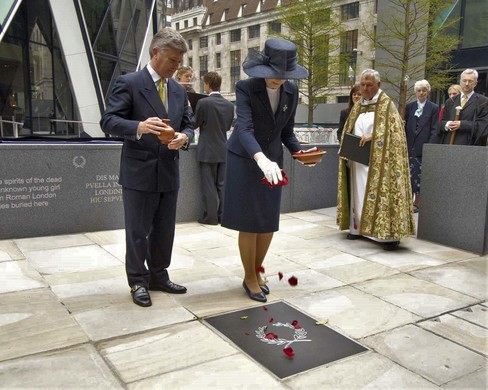
Copyright Foster & Partners
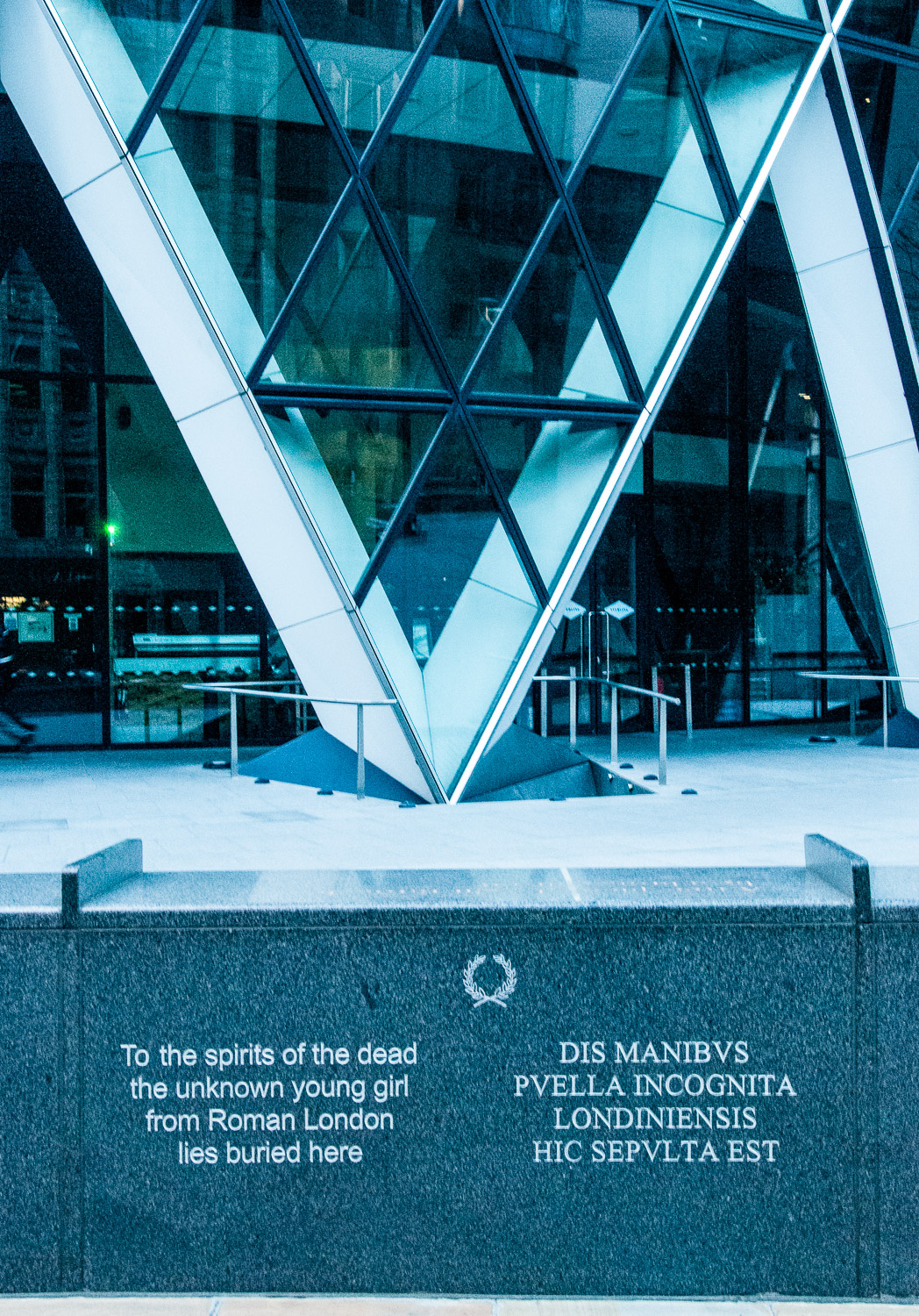
We don’t know her name, or whether she was an original Londoner, but she now rests again 1,600 years after her death in the place that she would have called Londinium.
Next week will also have a Roman theme as I will be reporting back on my visit to the new London Mithraeum in Walbrook.
